Let's talk about the future of online shopping and art
Don't wanna be here? Send us removal request.
Text
My Rollercoaster Ride at Orlando Pride: A Day of Surprises and Decisions
Hey there, fellow adventurers! Buckle up as I take you on a whirlwind journey through my recent escapade at Orlando Pride.
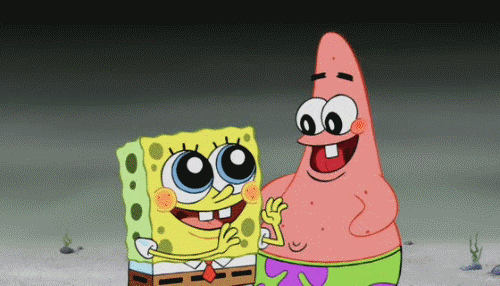
Picture this: a road trip that involved a few hours of driving, a hotel reservation the night before the event, and an unexpected detour into the world of timeshares. Yes, you read that right – timeshares.
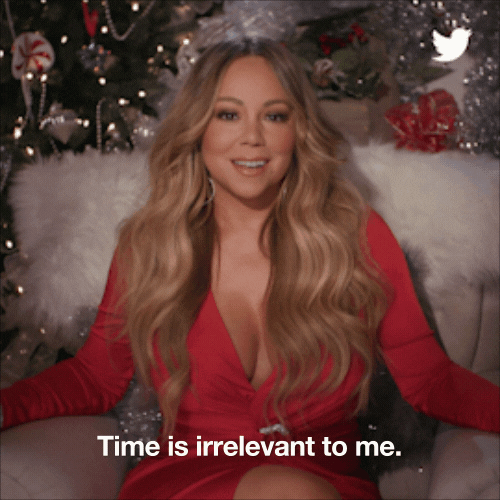
It all started when my significant other and I checked into our hotel, blissfully unaware of the twist fate had in store for us. As we strolled through the lobby, we stumbled upon an opportunity too tempting to resist – a timeshare proposal. They dangled a $150 gift card and the promise of 7 days at any resort in exchange for just 2.5 hours of our my precious time. How could we say no? Little did we know that this quirky encounter would set the tone for a day filled with surprises and dilemmas.
Fast forward to the main event – Orlando Pride. It was all sunshine and rainbows until we encountered the not-so-glamorous aspects of a public event for the local community. Yes, the inclusivity and community spirit were fantastic, but they came hand in hand with a few headaches – people expecting freebies left and right. After 12 long hours, we managed to break even, excluding our travel expenses.
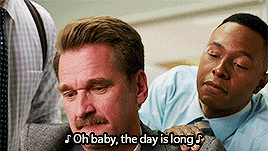
Now, let's talk numbers. The cost of securing a snug 10x10 marked pavement for our booth was a tad over $400. Add to that the considerable amount of time I'd invested in painstakingly crafting products and creating a handmade recyclable display for our brand. Trust me, having my back arched over all day didn't do wonders for my mood.
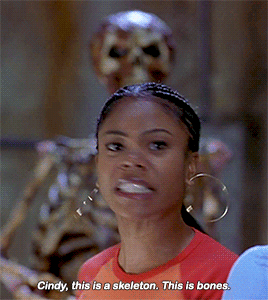
Thankfully, my incredible partner stepped in to handle sales for the rest of the day, saving me from turning into a human pretzel. But as we wrapped up the event, I found myself in a contemplative mood. Was all this effort worth it for my brand and, more importantly, for my happiness?

Before I dive headfirst into an 8:30 AM timeshare presentation, I decided to pen down this blog post (UPDATED - I WAS UNLAWFULLY DISCRIMINATED AGAINST...so the presentation never happened. Click here to learn more about what to do in cases of unlawful discrimination). In it, we'll dissect the world of business expos, weighing the pros and cons to help you, dear reader, make an informed decision about whether they're worth your while. So, grab your coffee and join me as we explore the exciting universe of business expos and find out if they're the right fit for your brand and your happiness.
Navigating the World of Business Expos for Small Artists: Is It Worth the Canvas?
Hello fellow artists and entrepreneurs! Today, we're diving headfirst into the realm of business expos, but with a twist tailored specifically for small artists. We'll explore the ins and outs of these events, considering factors like cost, venue, weather, and how showcasing your curated crafts can truly impact your artistic journey.
Setting the Stage: What Are Business Expos for Small Artists?
Picture this: Business expos for small artists are like vibrant canvases where creative minds get to display their work to an eager and appreciative audience. These events offer a unique opportunity to showcase your artistry, connect with potential customers, and build your brand.
Brushing Up on the Pros of Business Expos for Small Artists
1. Exposure and Networking: Business expos provide a golden opportunity to expose your artwork to a diverse and enthusiastic audience. Plus, they offer the chance to network with potential buyers, collaborators, and fellow artists, expanding your artistic horizons.
2. Professional Presentation: Just like a carefully crafted piece of art, your booth at a business expo should be a masterpiece. These events offer a platform to meticulously design and present your crafts, leaving a lasting impression on attendees.
3. Streamlined Decision-Making: Business expos simplify the decision-making process for potential buyers. Your unique creations can stand out in the crowd, making it easier for art enthusiasts to fall in love with your work.
4. Cost-Efficiency: For small artists, sharing the costs of exhibiting at business expos can make this marketing opportunity financially feasible, especially when compared to more costly advertising options.
Considering the Artistic Challenges
1. Weather Woes: The elements can be a factor for outdoor expos. Rain, heat, or cold can affect your display and potential buyers' willingness to browse.
2. Venue Matters: The location of the expo can significantly impact your success. Assess if the venue aligns with your target audience and artistic style.
3. Costs Can Add Up: While sharing costs can be an advantage, expenses can still rise, especially with unforeseen costs and fees.
4. Captivating the Crowd: Drawing attention in a sea of artistic talent can be challenging. Your booth's design and your ability to engage with visitors are crucial.
Is It Worth It? Let's Unpack 5 Key Factors for Small Artists
1. Accommodations: Weigh the cost of participating in business expos, including booth fees, against the potential sales and exposure your artwork could gain.
2. Weather Watch: Consider how outdoor expos might be impacted by the weather. Prepare accordingly and choose the right season for your art.
3. Venue Selection: Ensure that the chosen venue aligns with your target audience and your art's style. Location can make all the difference.
4. Artistic Ownership: Think about whether owning a booth at a business expo fits your long-term artistic goals. It's a platform to showcase your talent, but it may come with its challenges.
5. Flexibility Factor: Assess the flexibility of business expo participation compared to alternative marketing strategies tailored to artists.
Exploring Artistic Alternatives
If business expos don't align with your artistic journey, there are alternative paths to consider:
1. Online Art Markets: Virtual art markets offer a cost-effective way to showcase and sell your creations to a global audience.
2. Artistic Communities: Joining artist communities and networking events can help you connect with fellow creatives and art enthusiasts.
3. Local Galleries: Exploring local galleries and exhibitions can provide another avenue to showcase your work and build your reputation.
4. Social Media Showcases: Leverage the power of social media platforms to display your art and engage with art lovers worldwide.
In conclusion, business expos tailored to small artists can be an exciting canvas for your artistic journey. However, the decision to participate should align with your artistic goals, budget, and the unique challenges you may face. While business expos offer a platform to shine, it's essential to explore alternative strategies that cater to your artistic vision and provide flexibility in the ever-evolving art world. Join me on this creative adventure, and let's uncover the truth about the world of business expos for small artists together!
#timeshares#art woes#discrimination#business#orlando pride#pride#love wins#businessexpansion#blog#biznes
0 notes
Text
Fashion & Art in the E-Commerce Era: When Corporate Couture Cramps Creative Style!
Hey there, fashionistas, art lovers, and digital window shoppers! Ever get the feeling while scrolling through big retail websites that, even in the vast expanse of the internet, fashion and art e-commerce have become eerily uniform?

It's like all major retail sites attended a masterclass titled "How to Turn Creativity into Corporate Conformity". 🤔

The Retail Repeat Phenomenon
Remember when shopping online felt like stepping into a digital art gallery or a fashion wonderland, where every store had its unique flair? Now, it's more like stepping into a digital department store, where everything feels mass-produced. “Oh look, another generic art print!” “Guess what, another cloned clothing collection!”

From Runway to Run-of-the-Mill
Fashion and art were always about expression. Yet, as Mr. Capitalism strutted down the e-commerce runway,

it became less about the art and more about who can replicate success formulas the fastest. So instead of trailblazing designs or awe-inspiring art pieces, we get... standardized styles. Yawn!
The Designer Dilemma
Emerging fashion designers and artists are trying to carve a niche in an online world where the giants have all the ad space, the best digital racks, and the loudest virtual megaphones. It's not a battle of who's the most creative, but rather who has the biggest marketing wallet.

The Silver Stitch in the Fabric
Here's the twist: the digital realm is boundless. While the retail giants are busy being predictably posh, independent designers and artists can weave their unique threads and brushstrokes into the web's vast tapestry. Because real style and artistry? They can't be boxed into a corporate mold.

In Conclusion
The world of e-commerce fashion and art might be dominated by the monochrome monotony of major retailers, but true creativity still shines in the corners. Let's cherish the underdog designers and unsung artists who make the online marketplace a canvas of innovation.
P.S. To the indie artists and fashion visionaries: Keep stitching your stories and painting your passions. The digital world is vast, and there's plenty of space for your masterpiece! 🎨👗
#IndieInnovationInvasion#FromRunwayToRealArt#ReclaimingRetailRebellion#ECommExpressionists#UnboxTheArtistry#DigitalDesignDisruption#NotYourAverageRetail#ArtisticECommRevolt
0 notes
Text
Art, AI, and the Future: Embracing the Voice of Underrepresented Cultures
Have you ever pondered what the future would look like if Da Vinci had an AI assistant? Or if the rich tapestry of art history was more inclusive of cultures often brushed under the proverbial rug? Dive in with me, as we intertwine these riveting concepts and journey through an alternate perspective on art, AI, culture, and the underrepresented.
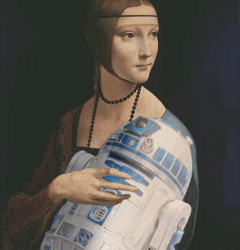
The Strokes of Time: A Glimpse into Art History
Rewind a few centuries back. Artists like Van Gogh and Picasso were making waves in the art world. Their innovative techniques, unique perspectives, and unfiltered emotions were etched onto canvases. But how many know about Zubeida Agha, a pioneer of modernist painting from Pakistan? Or the mystic Aboriginal art that tells tales of dreamtimes and ancestral beings?

A Cultural Revolution in the AI Era
Picture this: an AI digging deep into forgotten or undiscovered troves of artistic wonders from underrepresented cultures. The potential for AIs to highlight marginalized voices, offer new interpretations, and restore forgotten masterpieces is monumental. But it's not just about excavating the past. AI tools can provide platforms for living artists from these cultures to shine, to weave their stories, and to challenge mainstream art norms.

AI: The New Muse or Adversary?
There’s a whispered fear: AI might one day replace human creativity. Yet, when viewed through a different lens, could AI serve as the bridge between ancient cultures and modern interpretation? Imagine an AI creating art inspired by the detailed carvings of African masks or the intricate patterns of Native American pottery. Instead of an adversary, AI could be the collaborator artists have been waiting for.

The Voice of the Underrepresented: Not a Whisper, But a Roar
In a globalized world where every voice yearns to be heard, it's vital to amplify those from corners often dimmed by dominant cultures. From the murals of Mexican streets to the rhythmic dance of the Maoris, each tells a tale of resilience, history, and identity. When combined with AI's vast potential, the voice of the underrepresented won’t be a mere whisper but a roaring call, challenging the art world's status quo.

A New Dawn in Art and Culture
In marrying art history with AI, and by rooting it deeply within the essence of underrepresented cultures, we aren't just looking at paintings or sculptures. We're envisioning a world where stories from every corner are told, interpreted, and celebrated. A world where the dance between man, machine, and culture paints a future more vivid and inclusive than ever before.

Stay curious, stay informed, and most importantly, never let art be bound by the confines of history or technology. For in the blend of tradition and future lies the beauty of our global tapestry.
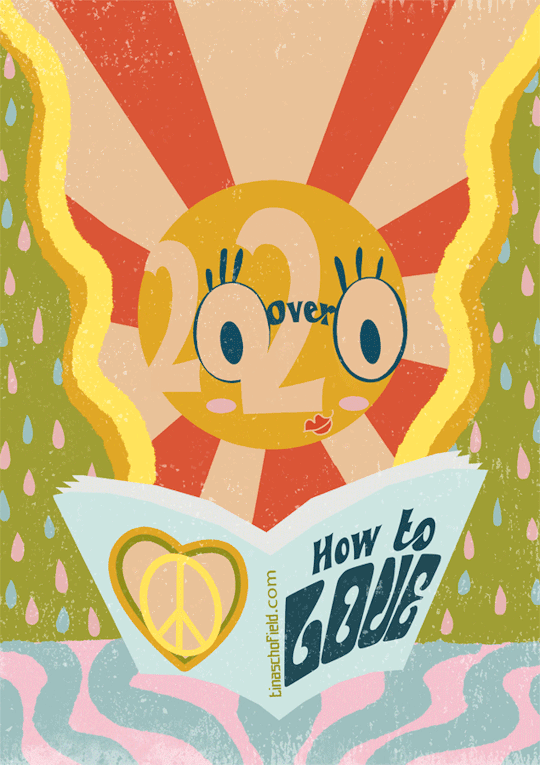
#AIArtFusion#CulturalCode#ArtHistoryReimagined#AIDigsDeep#BeyondTheCanvas#DigitalDreamtimes#AIUntoldStories#RisingVoicesInArt#TechMeetsTradition#CulturalCollabAIEchoesOfTheUnheardBrushstrokesAndBytesAIForAllCulturesRedefiningArtBoundariesPaletteOfTheFuture#artificial intelligence#art
0 notes
Text
Title: When Threads Meet Tech: The Evolution of Fashion Through Technology's Prism
Prepare yourself for a breathtaking journey as we dive deep into the glamorous yet profound world of fashion, and observe its fascinating dance with technology. Discover how these two seemingly different worlds have been weaving a shared narrative, an interplay of ideas, creating an extraordinary tapestry that has ultimately redefined our society's outlook.

Picture this: You're standing in front of your closet, overwhelmed by choices. Suddenly, your mirror lights up and shows how each outfit will look on you. Sound futuristic? That's the powerful alliance of fashion and technology for you.
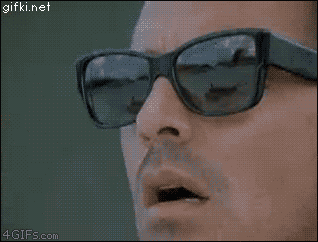
In the 1960s, innovation gave birth to materials like Polyester and Spandex, setting the stage for a revolution. Fashion houses swiftly responded, crafting iconic looks that still resonate in our collective memory.
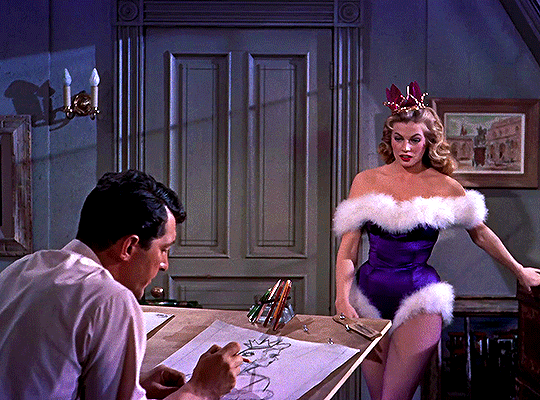
Then came the 90s, a breakthrough era with the Internet and digital technology at its heart. This period catapulted fashion to every corner of the globe, connecting designers, buyers, and enthusiasts, while introducing the democratization of style.
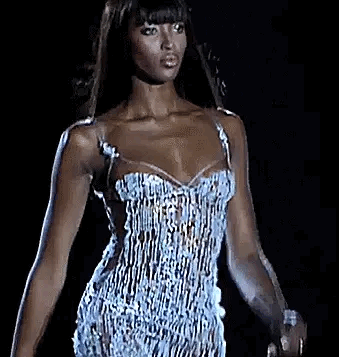
Fast-forward to today's world, where fashion tech isn't just about high-performance fabrics or smartwatches anymore. It's about sustainability through circular fashion apps, augmented reality for virtual fittings, 3D printing for personalized clothes, and AI predicting the next hot trend.

We're stepping into a future where clothing can adapt to our environment, where data-driven accessories will improve our well-being, and where ethical, eco-friendly choices are not just a trend, but a necessity. As technology progresses, the fashion industry rises to meet the challenges and opportunities that come with it.
In the grand scheme, the fashion-tech bond is not just about the clothes we wear. It's about our identity, our values, and our vision for the future. It's about the enthralling transformation of a creative, social, and economic phenomenon through the lens of technology. So, embrace the synergy and redefine your style with a tech flair.
Join the fashion-tech evolution. Don't be just a spectator; be a trendsetter.

#FashionTech #SustainableFashion #AR #AI #3DFashion #PersonalizedStyle #FutureOfFashion #FashionInnovation #TechFlair
#FashionTech#sustainablefashion#AR#ai#3DFashion#PersonalizedStyle#FutureOfFashion#FashionInnovation#TechFlair
0 notes
Text
Bad Bxar Wrld x AI: The future of how we design, manufacture, and consume clothing
A blog about theories and current solutions towards the future of manufacturing clothing out of natural and/or biodegradable material with custom on demand services
The fashion industry is facing increasing pressure to reduce its environmental footprint, with a growing number of consumers calling for more sustainable clothing options. In response, the industry is exploring new ways to manufacture clothing out of natural and biodegradable materials, while also incorporating custom on-demand services to meet the changing needs of consumers.
One of the theories driving this trend is the circular economy, which aims to keep resources in use for as long as possible. By using materials that can be easily replenished and that break down naturally at the end of their life cycle, the circular economy offers a more sustainable solution for clothing production. This is where natural and biodegradable materials, such as organic cotton, bamboo, and hemp, come into play. These materials can be grown and harvested with a reduced impact on the environment, and they also break down more easily once they have reached the end of their life cycle.
In addition to the use of sustainable materials, the fashion industry is also exploring new ways to meet the growing demand for custom on-demand services. With the rise of digital technology, it is now possible for consumers to design and order their own clothing, with production taking place only after the order has been placed. This eliminates the need for large quantities of clothing to be produced in advance, reducing waste and unnecessary resources.
One example of this type of service is the use of 3D printing technology to produce clothing. With this method, clothing can be designed and produced on demand, without the need for traditional manufacturing processes. This not only reduces waste, but also allows for greater customization, as consumers can design and order clothing that is tailored to their specific needs and preferences.
Another solution is the use of robots and automation in clothing production. By automating certain aspects of the manufacturing process, companies can increase efficiency, reduce waste, and ensure that clothing is produced in a more environmentallyfriendly manner. For example, robots can be programmed to minimize waste by using only the necessary amount of material, and to operate using renewable energy sources.
Despite these positive developments, there is still much work to be done to ensure that the fashion industry becomes fully sustainable. In addition to the use of sustainable materials and production methods, the industry must also consider the entire lifecycle of clothing, from the sourcing of raw materials to the disposal of end-of-life products.
For example, there is a growing trend towards rental and second-hand clothing, as consumers look for more sustainable options. This helps to extend the life of clothing, reducing the amount of waste generated by the fashion industry.
In conclusion, the fashion industry is at a turning point, as it faces increasing pressure to become more sustainable. The use of natural and biodegradable materials, custom on-demand services, and the implementation of cutting-edge technology are all promising steps in the right direction. However, the industry must continue to evolve and innovate in order to fully embrace sustainability, both for the sake of the environment and for the benefit of future generations.
0 notes
Text
Bad Bxar Wrld x AI : How the Boy Who Cried Wolf relates to challenges faced by new and emerging creators in saturated markets.
The Boy Who Cried Wolf is a well-known fable that teaches a valuable lesson about the dangers of repeatedly making false claims. The story revolves around a young boy who is tasked with watching over a flock of sheep. To pass the time, he repeatedly cries out "wolf" even though there is no danger. When an actual wolf does appear, the villagers ignore the boy's cries for help, as they have grown tired of his false alarms.
This story is an apt metaphor for the challenges faced by new artists and marketplaces trying to emerge in a saturated market. In today's competitive world, it is easy for these newcomers to get lost in the noise, as they struggle to gain attention and credibility. They may be tempted to make exaggerated claims or resort to sensationalism in order to stand out, but this strategy can backfire.
Just like the boy in the fable, if new artists and marketplaces repeatedly make false claims, they will lose the trust of their potential customers. In a crowded market, trust is everything, and once it is lost, it is difficult to regain. The result is that these new entrants will find it harder to gain traction and establish themselves as legitimate players in their respective industries.
So, what can new artists and marketplaces do to overcome these challenges? The answer lies in building credibility through consistent and authentic messaging. Instead of resorting to sensationalism or false claims, they should focus on building a solid reputation by delivering on their promises and providing a high-quality experience for their customers.
In conclusion, the Boy Who Cried Wolf serves as a cautionary tale for those trying to emerge in a saturated market. By avoiding false claims and building credibility through consistent and authentic messaging, new artists and marketplaces can overcome the challenges and establish themselves as successful players in their respective industries.
Bad Bxar Wrld's response:
Bad Bxar Wrld's Space Cave community (to be officially released to the public in phase II beta by April 2023) has been designed to ensure that every new Creator (seller) is given a fair chance, while actively vetting their credibility. The design allows for equal opportunities by utilizing a search by seller system rather than the traditional (painfully time consuming) search by consumer, while supplying Creatives (buyers/consumers) with full-service satisfaction. No need to cry wolf here. Creators may be able earn positive income from day 1 without lofty investments that impact not only individual and small business pockets, but the environment as well, in saturated retail markets. This is possible through the Universal Green Standard initiative set forth by Bad Bxar Wrld where technology is used to truly connect creators worldwide and create personalized products without limits or waste.
Below are some AI generated artwork created via the new platform by only using a text prompt. Artwork like this, made by you or anyone worldwide, can be reconfigured to fulfill the surface of multiple products. For example, a new jacket that is personalized to your body or unique centerpiece for your living room, both that could be made from 100% recycled materials.
Bad Bxar Wrld is in the business of fashion, art, culture, and sustainability as well as providing a seamless online experience for its users. When products are purchased and made from sustainable sources, we all get rewarded in more ways than one: good deals, a personalized fit, and a better planet.



0 notes
Text
Hello there!
What's this about you ask? Well, it's about:
Creating and selling unique custom fashion and art online the right way- Prior to 2023 Bad Bxar used the traditional online shopping experience where users search and scroll to find that new statement piece that looks like it could potentially match their shoes in their closet. Yup, we’ve all been there. With the recent developments in technology, Bad Bxar Wrld is proposing to incorporate an AI-to-build product environment called the Space Cave. Bad Bxar Wrld is looking towards a 100% sustainable future as great technological advances and accessibilities in manufacturing are emerging.
Transforming and disrupting the typical online shopper experience is far from an easy task. Skeptics, competition, and resources is definitely a challenge when it comes to engaging the world with such a solution. The goal is to give the consumer more control of their end products, by allowing users to completely customize their products with little effort in design and outreach, by utilizing text-to-image AI generation.
Behind the scenes, Bad Bxar Wrld's verified community of creators will then place bids on the item, displaying critical need-to-know attributes such a lead time, and final cost. The user, who is now the purchaser, will select the bid that best meets their needs , using an intuitive quick select to get the product they created.
This AI-to-product model will ultimately create a better environmental impact, as the consumer is getting exactly what they bargained for opposed to browsing endless sites and settling on plausible variations. This settling usually ends up with textiles being discarded much quicker by consumers, also known as fast fashion, leading to more waste and pollution. The new AI-to-build product environment proposed by Bad Bxar Wrld, will lead to a Universal Green Standard that is projected to be adopted in many industries.
To further bettering the planet for our future, Bad Bxar Wrld is dedicated in establishing green infrastructures that will recycle used products purchased through us. Whether it’s 6 months later or 6 years later, the item can be returned free-of-charge for recycling at our facility if applicable.
Continue following us as we navigate this journey! Check out a short video below.
0 notes
Text
Welcome ! Let's talk about the history and pop culture of virtual Easter eggs in video games and other technologies!
Easter eggs in video games have been around since the 1970s, with the earliest known example appearing in the game Adventure for the Atari 2600. The term "Easter egg" was coined by Atari programmer Warren Robinett, who hid his name in the game as a way to claim credit for his work.
Since then, Easter eggs have become a staple of video game culture, with developers hiding all sorts of secrets and references in their games. Some Easter eggs are subtle, like hidden rooms or secret characters, while others are more overt, like references to other games or pop culture.
One of the most famous Easter eggs in video game history is the "Aerith's Theme" Easter egg in the role-playing game Final Fantasy VII. In the game, players can find a hidden location where they can hear a piano version of Aerith's theme, a poignant and memorable music from the game. This Easter egg became extremely famous and it's still a beloved moment for many fans.
Easter eggs have also made their way into other forms of technology, such as websites and software. Google, for example, is known for hiding Easter eggs in its search results, such as the "do a barrel roll" command, which causes the search results page to spin.
In recent years, Easter eggs have also become a part of internet culture, with memes and viral videos often referencing or poking fun at Easter eggs in video games and other technologies.
We hope you enjoyed this brief history of virtual Easter eggs in video games and other technologies. Happy hunting!
0 notes
Text
Recent Advancements in AI
Welcome to our blog. Today we are discussing how we are improving the Environment with AI:
Artificial intelligence (AI) is a rapidly developing field that has the potential to make a big impact on the environment. Bad Bxar Wrld is committed to using AI to solve the unique challenges of excessive textile waste and landfills. Here are three other scenarios where recent advancements in AI have benefited the environment:
Smart Energy Management: AI is being used to optimize energy consumption in buildings and homes. This includes using machine learning algorithms to predict energy demand and adjust heating and cooling systems accordingly. This can lead to significant energy savings, which can help reduce carbon emissions and mitigate the effects of climate change. Nokia is one of the few companies that are utilizing this solution.
Autonomous Vehicles: Self-driving cars powered by AI have the potential to reduce traffic congestion and lower emissions. By improving traffic flow and reducing the need for human-driven cars, autonomous vehicles can help reduce the environmental impact of transportation. Autonomous vehicles have been long speculated in human history and quite a few companies (and students) are racing to fully commercialize them.
Forest Management: AI is being used to monitor forests and detect illegal logging and other forms of deforestation. By providing real-time information about what is happening in the forest, AI can help conservationists and park rangers respond quickly to protect endangered species and preserve natural habitats. Here is a link to an article that goes more into depth about some startups that are making a big impact with this type of use of AI technology.
These are just a few examples of how AI is being used to help improve our global environment. As the technology continues to advance, it will likely play an even bigger role in addressing some of the biggest environmental challenges facing our planet today.
#AI #environment #sustainability
0 notes
Text
Welcome to our Tumblr blog dedicated to exploring the intersection of art and technology! Today, we want to focus on how artificial intelligence (AI) is having a positive impact on the world of art and compare it to previous advancements in technology that have also benefitted artists.
First, let's talk about how AI is impacting the art world. One of the most exciting ways that AI is being used in art is through the creation of generative art. This type of art is created using algorithms and AI, rather than human hands. This allows for an endless variety of possibilities and new forms of expression. Additionally, AI is being used in art restoration and conservation, allowing for a more efficient and precise preservation of important works.
Previous advancements in technology have also greatly impacted the art world. For example, the invention of the printing press in the 15th century revolutionized the way that art was created and distributed. It allowed for multiple copies of an image to be made and distributed, which greatly expanded the reach of artists and their work. Similarly, photography in the 19th century allowed for a new form of visual representation and also greatly expanded the reach of art to a wider audience. The advent of the internet also has greatly impacted the art world, enabling artists to reach a global audience and making it easier for people to discover and purchase art.
In conclusion, AI is having a positive impact on the art world, just as previous advancements in technology have done before. The ability for AI to create new forms of expression and preserving art through digital means is exciting and opens up new opportunities for artists and art lovers alike. We will continue to explore the intersection of art and technology on this blog and we would love to hear your thoughts and insights.


1 note
·
View note